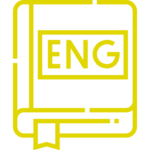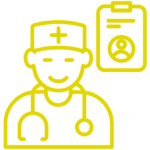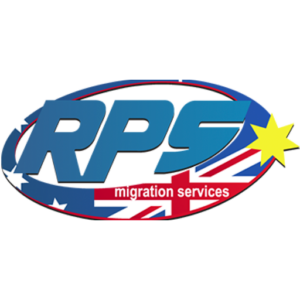Our Services
Medical Radiographer

Medical radiographers play a crucial role in the Australian healthcare system
Here are some key aspects of their role:
Medical radiographers perform various imaging procedures to aid in the diagnosis and treatment of medical conditions. They use techniques such as X-rays, computed tomography (CT), magnetic resonance imaging (MRI), ultrasound, and nuclear medicine to produce high-quality images of the body’s internal structures.
Radiographers ensure patient comfort and safety during imaging procedures. They explain the process to patients, address any concerns or questions, and position them correctly for optimal image quality. They also follow strict radiation safety protocols to minimize radiation exposure for both patients and themselves.
Radiographers are responsible for operating complex imaging equipment effectively. They calibrate, adjust, and maintain equipment to ensure accurate image acquisition. They troubleshoot technical issues that may arise during procedures and collaborate with medical physicists or engineers when necessary.
While radiologists are primarily responsible for interpreting medical images, radiographers often assist by providing initial observations or highlighting specific findings. Radiographers’ knowledge of anatomy, pathology, and imaging techniques allows them to contribute valuable insights that aid in accurate diagnosis.
Radiographers educate patients about their imaging procedure, potential risks, and any necessary preparations. They provide reassurance, support, and clear instructions throughout the process. This helps alleviate anxiety and ensures cooperation from patients, resulting in successful outcomes.
Radiographers work closely with other healthcare professionals, such as radiologists, physicians, nurses, and technologists. They communicate effectively regarding patient history, image requirements, and any special considerations. This collaboration ensures coordinated care and appropriate use of diagnostic imaging resources.
Medical radiographers adhere to strict quality assurance protocols. These include regular calibration checks on equipment, maintaining accurate patient records, following infection control measures, and ensuring compliance with radiation safety guidelines. They also participate in ongoing professional development to stay updated on best practices.
Some radiographers are involved in research projects or contribute to the education and training of future radiographers. They may conduct studies, participate in clinical trials, or teach students about imaging techniques and patient care. This involvement helps advance knowledge and improve the quality of radiography practice.
The role of medical radiographers is vital in providing accurate diagnostic imaging services, ensuring patient safety, and supporting effective healthcare delivery within the Australian healthcare system. Their expertise contributes to timely diagnosis, treatment planning, and improved patient outcomes.
Overseas-trained Medical Radiographer
Overseas-trained medical radiographers make valuable contributions to the healthcare system in Australia. Here are some ways in which they contribute:

Diverse Skillset
Overseas-trained medical radiographers bring a diverse skillset and knowledge base from their home countries. They may have experience with different imaging techniques, equipment, and patient populations. This diversity enriches the field of medical radiography in Australia and allows for the exchange of best practices.

Cultural Competence
Overseas-trained medical radiographers often have experience working with diverse patient populations, including those from different cultural backgrounds or with limited English proficiency. Their understanding of cultural nuances and ability to communicate effectively can enhance patient care and improve outcomes.

Knowledge Transfer
Overseas-trained medical radiographers can share their expertise and knowledge gained from their training and work experiences abroad.This knowledge transfer benefits both colleagues within the healthcare system as well as patients who may benefit from alternative approaches or perspectives.

Adaptability & Flexibility
Overseas-trained medical radiographers are often known for their adaptability to new environments. They bring a willingness to learn local protocols, procedures, and regulations. They can quickly integrate into Australian healthcare settings while bringing fresh ideas or alternative approaches that they have learned elsewhere.

Workforce Support
The contribution of overseas-trained medical radiographers helps address workforce shortages in certain areas or specialties within Australia's healthcare system. Their presence helps alleviate staffing gaps, ensuring timely access to diagnostic imaging services for patients across various regions.

Collaboration & Teamwork
Overseas-trained medical radiographers foster collaboration within multidisciplinary teams. They work alongside other healthcare professionals, such as radiologists, nurses, and technologists, to provide comprehensive care for patients. Their unique perspectives contribute to effective teamwork, resulting in improved patient outcomes.

Professional Development & Research
Many overseas-trained medical radiographers actively engage in professional development activities such as attending conferences, presenting research findings, and participating in ongoing education programs. They contribute to the advancement of medical radiography practice in Australia through their involvement in research projects or sharing innovative techniques.

Cultural Sensitivity & Patient Advocacy
Overseas-trained medical radiographers often possess a heightened awareness of cultural sensitivity and patient advocacy. They understand the importance of respecting patients' beliefs, values, and preferences. This contributes to patient-centered care and helps build trust between healthcare providers and patients.
The contributions of overseas-trained medical radiographers enrich the field of medical imaging in Australia. Their diverse skills, knowledge, adaptability, and cultural competence enhance patient care, support workforce needs, and contribute to advancements in the profession.
Registration of Medical Radiographer
The process of registration for overseas-trained medical radiographers in Australia involves several steps. Here is an overview of the process:

1. Qualification Assessment
The first step is to have your qualifications assessed by the Australian Institute of Radiography (AIR) or a relevant assessing authority approved by the Department of Home Affairs. This assessment determines if your qualifications are equivalent to Australian standards.

2. English Language Proficiency
If English is not your first language, you may need to demonstrate proficiency through an approved English language test such as IELTS or OET. The specific requirements vary depending on the assessing authority and registration board.

3. Application for Registration
Once you have received a positive qualification assessment, you can apply for registration with the Medical Radiation Practice Board of Australia (MRPBA). MRPBA oversees the registration of medical radiation practitioners in Australia.

4. National Examination
In some cases, overseas-trained medical radiographers may be required to pass a national examination conducted by AIR or another authorized body. This exam assesses your knowledge and competency in medical radiography practices specific to Australia.

5. Internship/Work Experience
Depending on individual circumstances, you may be required to complete an internship or gain work experience under supervision in an approved healthcare facility. This practical training provides hands-on experience and ensures familiarity with local protocols and procedures.

6. Professional Development & Continuing Education
As part of maintaining registration, ongoing professional development activities are typically required. These activities include attending conferences, workshops, and completing relevant courses that contribute to continuing education within the field.
It’s important to note that specific requirements and processes may vary depending on factors such as your country of origin, the assessing authority chosen, and any changes in regulatory guidelines. It is advisable to refer directly to MRPBA’s website, AIR guidelines, and other relevant authorities for up-to-date information tailored specifically to your situation. Additionally, seeking guidance from professional organizations or mentors who have gone through this process can provide valuable support and advice throughout your registration journey.
RPS Advantage
RPS is a renowned organization that provides excellent services to assist overseas-trained medical radiographers in getting registered in Australia. Here are some ways RPS can support you throughout the registration process:
RPS can guide you through the qualification assessment process, ensuring that all necessary documents are submitted accurately and promptly. They have experience working with assessing authorities and can provide valuable insights to help you meet the required standards.
If English language proficiency is a requirement, RPS can provide guidance on approved tests, preparation strategies, and resources to help you achieve the required scores. They may offer language support or connect you with relevant training programs if needed.
RPS assists with the registration application process by providing detailed information about the required documentation, forms, and fees. They ensure that your application is complete and submitted within specified timelines.
If a national examination is part of your registration requirements, RPS offers comprehensive preparation materials, such as study guides, sample questions, and practice exams. They may also provide guidance on exam techniques, time management, and areas of focus based on their knowledge of previous examinations.
RPS has established relationships with healthcare facilities across Australia. They can assist in securing internship or work experience placements for overseas-trained medical radiographers. This practical training under supervision helps fulfill registration requirements while gaining valuable local experience.
After registration, RPS continues to support your professional development by providing access to relevant workshops, courses, and conferences. They keep you informed about opportunities for continuing education within the field of medical radiography.
Throughout the entire process, RPS offers ongoing guidance, support, and advice. They understand the challenges faced by overseas-trained professionals transitioning into a new healthcare system. Their expertise ensures that you receive personalized assistance tailored to your specific needs.
Relying on RPS’s services can streamline the registration process and alleviate potential stress associated with navigating unfamiliar requirements. They have a strong track record of assisting overseas-trained medical radiographers in achieving their registration goals in Australia. It’s important to note that while RPS provides valuable support, they work within the framework of regulatory bodies and authorities. It is advisable to refer directly to the relevant assessing authority, registration board, and official guidelines for accurate and up-to-date information specific to your situation. RPS can complement this information by offering their expertise and assistance throughout the process.
